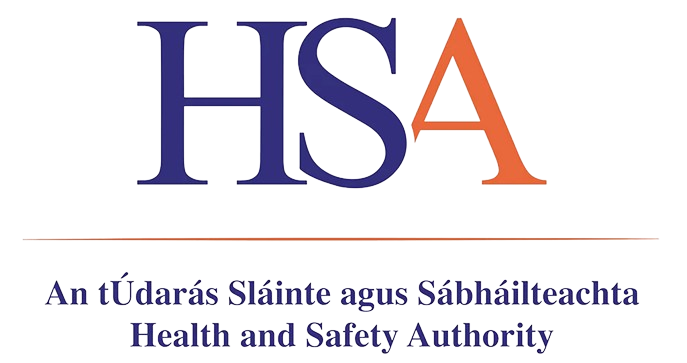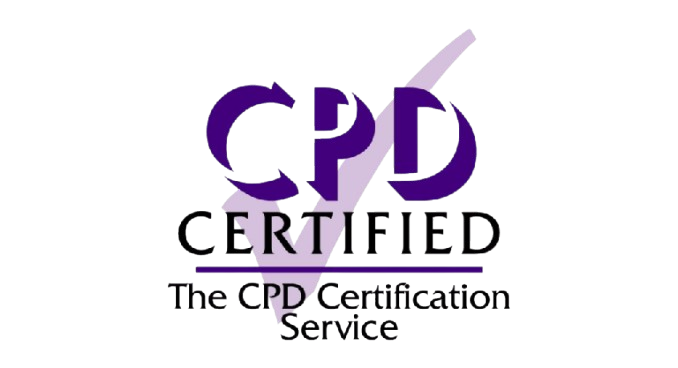
Online Courses
€90 | No Hidden Fees
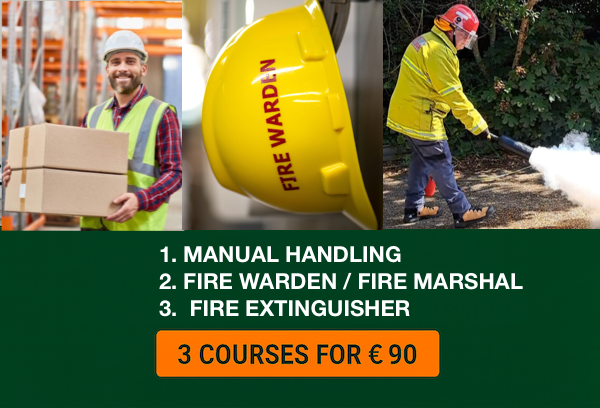
Online Courses
€90 | No Hidden Fees

Online Course
€35 | No Hidden Fees

Online Course
€35 | No Hidden Fees

Online Course
€35 | No Hidden Fees
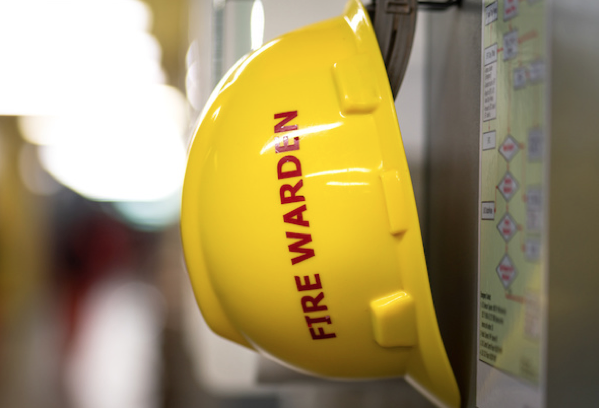
Online Course
€35 | No Hidden Fees
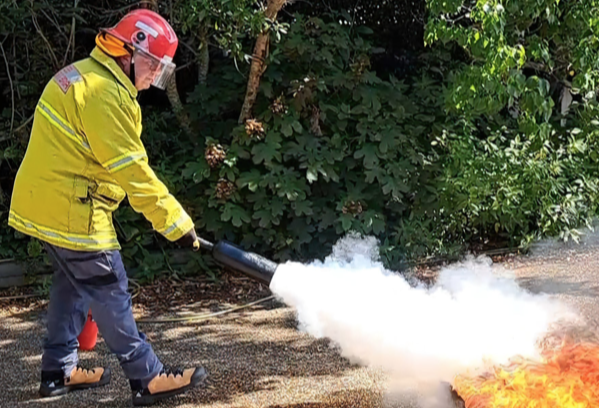
Online Course
€35 | No Hidden Fees

Online Course
€35 | No Hidden Fees
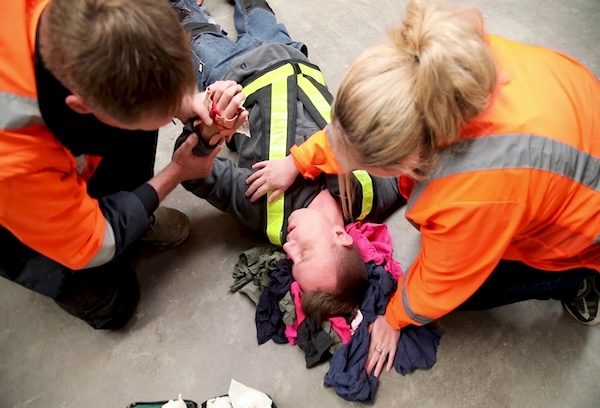
Online Course
€50 | No Hidden Fees

Online Course
€50 | No Hidden Fees

Online Course
€35 | No Hidden Fees

Online Course
€35 | No Hidden Fees

Online Course
€35 | No Hidden Fees

Online Course
€35 | No Hidden Fees

Online Course
€35 | No Hidden Fees

Online Course
€35 | No Hidden Fees
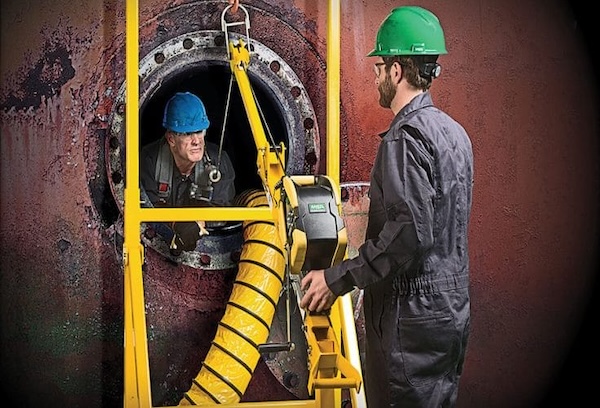
Online Course
€35 | No Hidden Fees

Online Course
€35 | No Hidden Fees

- Dublin
- Cork
- Limerick
- Galway
- Waterford
- Kilkenny
- Sligo
- Dundalk
- Athlone
- Tralee
- Wexford
- Clonmel
- Ennis
- Navan
Copyright © 2016-2025 | Safety Courses Ltd | Email:
[email protected]
Reset Password
Customer Login
Workplace Health & Safety
A thorough understanding of health and safety is essential in all workplaces, regardless of job role and industry. This accredited Health and Safety For Employees course ensures that you understand the most common health and safety risks in your workplace and the control measures that are needed to keep you safe.
The course covers the most crucial aspects of health and safety that are present in every workplace, such as manual handling, working at heights, and fire and electrical safety. It also explains the necessary components of workplace welfare, including workplace stress and conflict.
This course has been updated and is legally accurate in line with any guidance changes that have resulted from Brexit legislation - including any revisions to deadlines.
- Developed by Health and Safety Professionals
- Fully online course and assessment with no time limits
- Approximate duration: 3 hours
- Downloadable certificate on completion
Who should take this course?
Workers in all workplaces and industries are required to take health and safety training to ensure that they keep themselves, and those they work with, safe.
This course is designed for workers of all abilities and in all environments, including those who work in construction, education, offices, and hospitality. It covers the common health and safety risks that are present in all of these environments.
If you work in a low-risk environment and have never undertaken health and safety training before, then the Basic Health & Safety course provides an induction that may be more suitable for your needs.
If you are a manager or supervisor, then the Health & Safety For Managers course is recommended for your role.
This certified online training is ideal for people working in positions such as, but not limited to:
- Engineer
- Electrician
- Chef / Cook
- Administrator
- Teacher
Working remotely? Our Health & Safety For Home Workers training is specifically designed for remote working in the home.
Course content
| Module | Description | |
|---|---|---|
| 1 | Introduction to Health and Safety Law | The benefits of health and safety, the main causes of workplace ill-health and accidents, factors that impact on health and safety, the Health and Safety at Work etc. Act 1974, the Management of Health and Safety at Work Regulations 1999 (MHSWR), the Health and Safety Executive, health and safety hazards, and the Reporting of Injuries, Diseases and Dangerous Occurrences Regulations (RIDDOR). |
| 2 | Risk Assessment | What is a risk assessment?, who should carry out a risk assessment?, identify the hazards, decide who might be harmed and how, evaluate the risks and decide on controls, record your findings, and review and update the risk assessment. |
| 3 | Workplace Safety | Safe systems of work, slips, trips and falls on the same level, falls from height, housekeeping, electrical safety, and fire safety. |
| 4 | Workplace Welfare | Welfare facilities, first aid, first aid safety signs, workplace stress, drugs and alcohol, and workplace conflict and violence. |
| 5 | Manual Handling and Display Screen Equipment | Manual handling, manual handling regulations, further requirements for lifting equipment, reducing manual handling risks, good manual handling techniques, display screen equipment, and workstations. |
| 6 | Hazardous Substances and Working at Heights | Hazardous substances, the Control of Substances Hazardous to Health Regulations 2002 (COSHH), hazardous substances control measures, training and instruction, safety data sheets (SDSs), hazard labelling and packaging, working at height, working at height control measures, mobile towers, mobile elevating work platforms (MEWPs), marking of working at height equipment, safe use of ladders, and stepladders. |
| 7 | Noise, Vibration and Vehicle Safety | Noise at work, noise elimination, reduction, and control, hand-arm vibration, Hand-Arm Vibration Syndrome (HAVS) and Carpal Tunnel Syndrome (CTS), employer and employee responsibilities, vehicles, and safe use of vehicles. |
Aims of the course
By completing this training, you will:
- Have knowledge of key health and safety topics and how to ensure good practice within them.
- Understand the responsibilities of employers and employees under health and safety legislation.
- Understand the importance of, and the key factors in, undertaking a risk assessment to prevent and control hazards.
- Know the hazards and ill health effects associated with specific work activities and processes.
Assessment
The online assessment is taken on completion of the training material. You will be asked 20 multiple choice questions with a pass mark of 80%. The answers are marked automatically so that you’ll instantly know whether you passed. If you don't pass don't worry! You can take the test as many times as you need with no extra charge.
Asbestos Awareness Course (Category A)
Asbestos is an extremely hazardous substance that causes serious ill-health to anyone who disturbs or damages it. For this reason, all workers who may come across asbestos or asbestos-containing materials (ACMs) must be trained so that they can work safely. This includes work with potential ACMs, accidental discovery of asbestos, and accidental damage to asbestos and ACMs.
This IATP accredited Asbestos Awareness (Category A) course provides a comprehensive introduction to the dangers of working with asbestos. By taking our training you will be complying with the Control of Asbestos Regulations 2012. You will understand what asbestos is and where you may encounter it, the dangers associated with asbestos exposure, and what to do if you discover asbestos. This knowledge will help you or your team to stay safe around asbestos.
This course has been updated and is legally accurate in line with any guidance changes that have resulted from Brexit legislation - including any revisions to deadlines.
- Developed by Health and Safety Professionals
- Online training course and assessment with no time limits
- Approximate duration: 2 hours
- Downloadable certificate on completion
Who should take this course?
Our accredited Asbestos Awareness (Category A) course is designed for anybody who works with, or near, asbestos at work. This includes the following job roles:
- Heating engineers
- Ventilation engineers
- Carpenters and joiners
- Roofers
- Roofers
- Construction workers
- Demolition workers
- Plumbers
- Painters and decorators
- General maintenance workers
Please note that as this is a Category A Asbestos Course, the information in this course is an awareness level of training. It does not allow you to work with asbestos or conduct asbestos removal. Such work requires practical training additional to this course.
Course content
| Module | Description | |
|---|---|---|
| 1 | Introduction | In the first module of this course, we will provide you with a comprehensive introduction to asbestos awareness. We will explain what asbestos is, how you may disturb it during your work and the risks to your health from asbestos exposure. |
| 2 |
The Control of Asbestos Regulations |
This second module explains the main requirements of the Control of Asbestos Regulations 2012 (the CAR 2012) and how they apply to dutyholders. |
| 3 |
Health Risks and Personal Factors |
In the third module, we will explain the health complications that arise after exposure to asbestos. You will learn about asbestos-related diseases, Workplace Exposure Limits and your requirements for respiratory protective equipment. |
| 4 |
Discovery of Asbestos or Accidental Disturbance of ACMs |
In the final module, we will examine the dangers of disturbing asbestos. You will learn what to do if you discover asbestos unexpectedly, if you accidentally disturb Asbestos Containing Materials and the emergency procedures that you must follow. |
Aims of the course
By completing this training, you will understand:
- Why asbestos and asbestos-containing materials (ACMs) can be harmful and must be treated as hazardous substances.
- The very serious ill-health effects of asbestos.
- The control measures for asbestos required by the law.
- The responsibilities of employers and employees.
- What to do on discovery or accidental disturbance of asbestos-containing materials.
Assessment
After completing the four modules, you will be invited to take the course assessment. This is made up of 20 questions and will test the knowledge you have gained from your training. The questions are multiple choice and are marked automatically, so you will instantly know whether you have passed. The pass mark for the assessment is 80% and you can take it as many times as you need to with no extra charge.
Workplace First Aid Online Training Course
This online Workplace First Aid course is essential for everyone in every workplace and every home; you never know when you may need to use first aid skills and have the confidence to act in a potentially life-threatening situation.
Using high quality videos alongside written guidance, this online course will provide you with all the information needed to be able to recognise emergency situations, treat conditions and reactions and ensure that you can take appropriate action at the time of an incident. You will also learn how to safely administer first aid during the COVID-19 pandemic and the additional measures that are necessary, including personal protective equipment (PPE) and thorough cleaning.
Note that this online training course gives you sufficient awareness of first aid, but it does not replace competency-based, practical training. Always seek medical advice in case of emergency.
- Developed by a qualified first aid professional
- Approved by CPD
- Fully online course and assessment with no time limits
- Approximate duration: 3-4 hours
- On completion, certificate is posted the next working day
Who should take this course?
This course is suitable for people and businesses who wish to learn new first aid skills or refresh their existing first aid skills. No previous qualifications are needed to take this course as all the basic first aid techniques are covered throughout the training.
This course is best suited to low hazard workplaces (such as offices, shops and restaurants) where a qualified first aider is not required according to the first aid needs assessment. It's considered best practice for all employees to be provided with first aid knowledge, particularly those who are in charge of first aid arrangements, and this course satisfies that requirement.
Does This Course Allow Me to Become a Qualified First-Aider?
Always refer to your workplace's first aid needs assessment to determine whether you require practical training alongside this online course.
Course content
| Module | Description | |
|---|---|---|
| 1 |
Introduction to Workplace First Aid |
What is first aid?, first aid during COVID-19, key annual statistics, the Health and Safety (First-Aid) Regulations 1981, medical assistance, first aid kit, the importance of infection prevention, hand hygiene, handwashing procedure, personal protective equipment (PPE), cleaning after delivering first aid, waste disposal after giving first aid, recordkeeping, and the Reporting of Injuries, Diseases and Dangerous Occurrences Regulations 2013 (RIDDOR). |
| 2 |
The Primary and Secondary Surveys |
The primary survey (DRABC), step 1 - danger, step 2 - response, step 3 - airway, step 4 - breathing, step 5 - circulation, primary survey example scenario, the secondary survey, and full body examination. |
| 3 |
The Recovery Position and Cardiopulmonary Resuscitation (CPR) |
Unconscious casualties, the recovery position for adults and children, the recovery position for infants, the jaw thrust technique, cardiac arrest, administering CPR, administering hands-only CPR to adults, administering CPR with rescue breaths to adults, administering CPR to children, administering CPR to infants, further considerations for CPR, and defibrillators (AEDs). |
| 4 | Treating Injuries: Part One | Choking, wounds and bleeding, applying a bandage, shock, burns and scalds, electrical burns, and chemical burns. |
| 5 | Treating Injuries: Part Two | Eye injuries, head injuries, fractures, sprains and strains, dislocations, making an arm sling, and spinal injuries. |
| 6 | Illnesses and Health Conditions | Heart attacks, angina attacks, strokes, epilepsy, asthma, allergic reactions and anaphylaxis, diabetes, hyperventilation, nosebleeds, poisoning, and drowning. |
Aims of the course
Upon completion of this training, you will understand:
- The workplace first aid regulations, including first aid kits, training, and reporting incidents.
- Infection prevention considerations, including hand hygiene, personal protective equipment, cleaning after first aid, and waste management.
- How to carry out a primary survey using the DRABC acronym (danger, response, airway, breathing, and circulation), as well as how to carry out a secondary survey.
- How to put casualties into the recovery position, including if you suspect a spinal injury, and how to administer CPR to them and use defibrillators.
- How to treat a variety of injuries, including choking, wounds, shock, burns and scalds, eye and head injuries, fractures, sprains and strains, dislocations, and spinal injuries.
- How to treat a variety of illnesses and conditions, including heart and angina attacks, strokes, epilepsy, asthma, allergic reactions, diabetic emergencies, hyperventilation, nosebleeds, poisoning and drowning.
- How to administer first aid safely during the COVID-19 pandemic, including infection prevention considerations and how you may need to alter the techniques you use.
Assessment
The online assessment is taken on completion of the training material. You will be asked 30 multiple choice questions with a pass mark of 80%. The answers are marked automatically so you will instantly know whether you have passed. If you don't pass don't worry! You can take the test as many times as you need with no extra charge.
Fire Warden Training Course
Also referred to as Fire Marshal Training, this course prepares you to take on the essential role of a Fire Warden in the workplace. Fire Wardens play a critical part in supporting employers with implementing fire safety measures and coordinating emergency evacuations.
This fully online course provides the theoretical training needed to become a certified Fire Warden. You'll learn about your legal responsibilities, fire safety principles, hazard awareness, and the key elements of emergency procedures — all designed to help safeguard everyone in your workplace.
- Developed by Health & Safety Experts
- Fully online course and assessment
- No time limits – study at your own pace
- Duration: approx. 1–2 hours
- Certificate posted the next working day
Who Should Take This Course?
This course is ideal for anyone who will be appointed as a Fire Warden. No prior knowledge is required. Whether you're a team lead, manager, or staff member, this course provides the foundation and role-specific knowledge needed to fulfil fire safety responsibilities with confidence.
Course Content
| Module | Description | |
|---|---|---|
| 1 | Introduction to Fire Warden Training | The importance of fire safety, legislation in Ireland, employer obligations, fire warden duties, how many fire wardens you need, and preparing for your role. |
| 2 | Understanding Fire | The fire triangle, fire categories, hazardous materials, labelling, packaging, and understanding safety data sheets. |
| 3 | Fire Risk Assessment | Key terminology, identifying hazards, assessing risks, setting precautions, documentation, and regular review of fire risk assessments. |
| 4 | Fire Safety Arrangements | Prevention measures, alarm systems, responsibilities for electrical equipment, fire extinguishers, and fire blankets. |
| 5 | Evacuation Routes and Signs | Evacuation route regulations, emergency lighting standards, and fire signage requirements. |
| 6 | Emergency Protocols & Fire Drills | Evacuation strategies, preparing for vulnerable individuals, the fire warden’s role during emergencies, and how to conduct effective fire drills. |
Aims of the Training
By completing this course, you will understand:
- Workplace fire safety legislation
- Fire categories and how they spread
- How to carry out a fire risk assessment
- Common fire hazards in the workplace
- Fire prevention and control strategies
- Types of extinguishers and how to use them
- Fire detection and alarm systems
- Fire safety planning and evacuation routes
- Specific fire warden duties during emergencies
- PEEPs (Personal Emergency Evacuation Plans)
- How to organise and lead fire drills
Assessment
The online assessment is taken after completing the training material. It consists of 20 multiple choice questions with a required pass mark of 80%. You’ll receive your results instantly. If you don’t pass the first time — don’t worry! You can retake the test as many times as needed at no extra cost.
Fire Extinguisher Training Course
This Fire Extinguisher Training course teaches you about the various types of fire extinguishers that may be present in your workplace and how to use them effectively and safely.
You'll learn about the hierarchy of fire prevention, about how fires start, and about the various classes of fires, which each require certain types of fire extinguishers to fight. Furthermore, you'll learn about the importance of assessing the situation to determine whether it’s safe for you to attempt to fight a fire, and you'll learn about the techniques for effectively and safely using each type of fire extinguisher and other fire fighting equipment, demonstrated through a range of illustrations and videos.
This course has been updated and is legally accurate in line with any guidance changes that have resulted from Brexit legislation - including any revisions to deadlines.
- Developed by Health & Safety Professionals
- Fully online course and assessment with no time limits
- Approximate duration: 1-2 hours
- On completion, certificate is posted the next working day
Who should take this course?
This course is aimed at those who are nominated by their employers to use fire extinguishers and fire fighting equipment. This includes anyone identified in the fire risk assessment, such as fire wardens, managers, supervisors, and other employees who may have been nominated to fight small, controllable fires.
It can be taken as an introductory course to using fire extinguishers before undergoing practical training, as well as periodic refresher training after receiving practical instruction. Practical training is typically refreshed every 3 years, so this course can serve as a comprehensive refresher in between. It'll solidify the learner's knowledge and build on their confidence to use extinguishers safely in an emergency.
Looking to appoint a designated fire warden or become one yourself? Our Fire Warden Training course provides learners with the necessary knowledge to fulfil this role.
Course content
| Module | Description | |
|---|---|---|
| 1 |
Types of Fires and Extinguishers |
Why is fire extinguisher training important, the hierarchy of fire protection, the fire triangle, classes of fire, types of extinguishers, water extinguishers, powder extinguishers, foam extinguishers, carbon dioxide extinguishers, wet chemical extinguishers, and how many extinguishers should workplaces have and what types? |
| 2 |
Understanding When to Fight Fires |
Who may use fire extinguishers in a workplace, what should you do before fighting a fire, determining if it's safe to use an extinguisher, when should you fight fire with a fire blanket, and using fire buckets and sand. |
| 3 |
Using Fire Extinguishers Safely |
Selecting an extinguisher, the PASS technique, basic steps for using an extinguisher, how to use water extinguishers, how to use ABC powder extinguishers, how to use M28 and L2 powder extinguishers, how to use foam extinguishers, how to use carbon dioxide extinguishers, how to use wet chemical extinguishers, how to use a fire blanket, and what to do if you can't put out a fire. |
Aims of the course
By the end of this course, you will be familiar with:
- The fire triangle and the different classes of fires.
- The various types of fire extinguishers and fire fighting equipment that workplaces may use.
- What the responsibilities of employers are regarding fire extinguishers and fighting fires.
- What the duties are of fire wardens and other nominated employees for fighting fires.
- Which extinguishers are used to fight certain classes of fires.
- How to assess the situation if a fire starts and what first steps you should take before you attempt to fight it.
- How to use the basic PASS method to use extinguishers.
- When and how to use a fire blanket or fire damping materials such as sand.
- The specific techniques you must use for certain extinguishers to ensure safety and effectiveness.
Assessment
The online assessment is taken on completion of the training material. You will be asked 20 multiple choice questions with a pass mark of 80%. The answers are marked automatically so that you’ll instantly know whether you passed. If you don't pass don't worry! You can take the test as many times as you need with no extra charge.
Level 2 HACCP Training For Catering & Retail
By law, all food businesses – including catering, retail and manufacturing – must have an effective food safety management system in place. This Level 2 HACCP for Catering and Retail course will introduce learners to the Hazard Analysis and Critical Control Points management system and help you to understand how to comply with the law, how to work safely and efficiently and what each crucial step of the HACCP implementation process entails. This course has been written specifically for those who work in a catering or food retail environment.
By the end of the course learners will have a thorough understanding of why HACCP is important, knowledge of the importance of having effective prerequisites in place, how the 7 HACCP principles can be implemented and what can be done to identify food safety hazards and to ensure the food handled in their business remains safe for the consumer.
- Developed with food safety professionals
- Reviewed by a BRCGS approved lead auditor
- Endorsed by the Institute of Hospitality
- Ensures compliance with UK regulations on the Food Safety and Hygiene (England) Regulations 2013 (and similar)
- Ensures compliance with EU Regulation (EC) No 852/2004 on the hygiene of foodstuffs
- Fully online course and assessment with no time limits
- Approximate duration: 4 hours
- On completion, certificate is posted the next working day
If you work in food manufacturing then our specifically designed Level 2 HACCP for Manufacturing course will be more suitable.
Who should take this course?
This Level 2 HACCP for Catering and Retail course is suitable for employees at all levels within a food business. This includes full-time, part-time and temporary workers. The course aims to provide a comprehensive introduction to HACCP and teaches learners about what they can do to help their business implement the system and comply with the law.
It’s recommended that learners who have not previously taken a Level 2 Food Safety and Hygiene course do so alongside this Level 2 HACCP training.
If you’re a manager or a supervisor of a food business then you should take our Level 3 HACCP course.
This certified online training is ideal for people working in positions such as, but not limited to:
- Chef / Cook / Food Handler
- Catering / Cafe Assistant
- Food Retail Worker
If you work in food manufacturing then our specifically designed Level 2 HACCP for Manufacturing course will be more suitable.
Do You Comply With the European Food Safety Regulations?
The European Regulation (EC) No 852/2004 on the Hygiene of Foodstuffs requires food businesses in the EU to implement a food safety management system based on the Codex HACCP principles.
By providing effective training, employers can help to ensure that everyone in the workplace is competent to carry out their work safely. Managers, supervisors and other members of staff should be able to recognise the hazards posed by their work, be able to take action to reduce or eliminate the risks and understand how to follow procedures.
Regardless of the UK's membership of the EU, the internationally recognised HACCP principles remain just as relevant and are vital to ensuring the highest safety standards in the food sector.
Course content
| Module | Description | |
|---|---|---|
| 1 | Introduction to HACCP | What is HACCP?, what is Safer Food, Better Business (SFBB)?, key terms, legislation, benefits of HACCP, enforcing the law. |
| 2 | Microbial Hazards | Microbial hazards, pathogenic bacteria, spoilage bacteria, high and low-risk foods, food preservation, viral contamination. |
| 3 | Food Safety Hazards | How contamination applies to HACCP, physical contamination, chemical contamination, allergenic contamination, cross-contamination, fraud and tampering. |
| 4 | Prerequisite Programmes | Why prerequisites are required, examples of prerequisites, assessing prerequisites, analysing gaps in prerequisites. |
| 5 | Creating a HACCP System | The basics of HACCP, create a HACCP team, describe the products and ingredients, identify the uses and consumers of the products, construct a flow diagram, confirm the flow diagram. |
| 6 |
The 7 Principles: Hazard Analysis and Control Measures |
The seven principles of HACCP, hazard analysis, determine critical control points, the codex decision tree, establish critical limits. |
| 7 | The 7 Principles: Monitoring and Verification | Monitor critical control points, establish corrective actions, establish verification procedures, reviewing the HACCP plan, record-keeping. |
Aims of the course
By the end of this course learners will:
- Have knowledge of food hygiene legislation and recognise why HACCP is relevant.
- Understand the main categories of food safety hazards.
- Be aware of the seven principles of HACCP.
- Understand the importance of having effective prerequisites in place before implementing a HACCP system.
- Understand what's involved in setting up a HACCP system.
- Know more about identifying food safety hazards and their appropriate control measures.
- Understand the importance of continually monitoring the HACCP system.
Assessment
The online assessment is taken on completion of the training material. You will be asked 30 multiple choice questions with a pass mark of 80%. The answers are marked automatically so you will instantly know whether you have passed. If you don't pass don't worry! You can take the test as many times as you need with no extra charge.
Abrasive Wheels Training
Abrasive Wheels Training Course
Nearly half of all accidents resulting from abrasive wheels
happen due to unsafe working practices and operator errors. If
you work with abrasive wheels then following strict health and
safety practices is paramount to protect both yourself and
others from harm.
This Abrasive Wheels course will provide you with an
introduction to working safely with abrasive wheels so that you
can understand the risks and know which control measures are
needed to prevent injury and ill-health.
Who Should Take This Course?
This course is suitable for anyone who uses abrasive wheels in their work activities. The course is particularly relevant for those who use bench grinders, pedestal grinders and angle grinders. Although the training doesn't cover the use of specialist grinding machines, the health and safety information throughout the course is still applicable. This course has been written at an introductory level and no pre-requisite training is required. Experience of using abrasive wheels would be advantageous.
This certified online training is ideal for people working in
positions such as, but not limited to:
Engineer
Builder / Floor Layer / Bricklayer
Electrician
Carpenter / Joiner / Fitter
Site / Project Manager
Welder
Course Content
The course is divided into four accessible, interactive modules
and also includes an assessment at the end:
| Module | Description | |
|---|---|---|
| 1 |
Introduction to Abrasive Wheels |
Types of abrasive wheels, dangers of abrasive wheels,
abrasive wheels and the law, manufacturers responsibilities, employer responsibilities, employee responsibilities, HSE guidance. |
| 2 | Risk Assessment |
What is a risk assessment?, who should carry out a risk
assessment?, Step One: Identifying hazards, Step Two:
Decide who might be harmed and how, Step Three: Evaluate the risks, Step Four: Record the findings, and Step Five: Review and update. |
| 3 |
Safe Practices for Abrasive Wheels |
The hierarchy of control, wheel speed, wheel handling and
storage, wheel mounting, mechanical guards and work rests,
safe working practices, inspections and checks and safely dressing abrasive wheels. |
| 4 |
Further Abrasive Wheel Hazards and Controls |
Prevention of eye and face injuries, harmful dusts,
vibration control, noise reduction and control, fire risks,
electrical safety, hand-held grinding and cutting-off tools, training, communication and monitoring, Reporting of Injuries, Diseases and Dangerous Occurrences Regulations 2013 (RIDDOR), first aid and emergency procedures. |
Aims of the Training
By completing this training, you will:
- Identify the main types of abrasive wheels and their equipment, and will understand the hazards and risks associated with them.
- Understand the legal requirements placed on manufacturers, employers and employees for the safe use of abrasive wheels.
- Know how to carry out a risk assessment for the safe use of abrasive wheels.
-
Be aware of the control measures needed to reduce or eliminate
the risks associated with abrasive wheels,
including harmful dusts, vibration, noise, fire and electrical risks. - Understand how to safely handle, store, mount, use, dress and inspect the main types of abrasive wheels.
Assessment
The online assessment is taken on completion of the training material. You will be asked 20 multiple choice questions with a pass mark of 80%. The answers are marked automatically so you will instantly know whether you have passed. If you don't pass don't worry! You can take the test as many times as you need with no extra charge.
Office Health and Safety Training
Office Health & Safety Training
This Office Safety course provides learners with an introduction
to the common safety hazards that can be found in an office
environment.
The course explains how to identify health and
safety risks and details what office workers can do to prevent
their work tasks and behaviours from causing harm.
All low-risk workplaces, including offices, contain health and
safety hazards that need to be carefully controlled.
As an
employee, it's important to have an awareness of the risks so
that dangers can be identified and action can be taken to
prevent injury or ill-health.
Who Should Take This Course?
This Office Health and Safety course is suitable for anyone who works in an office workplace, including managers, supervisors, full-time and part-time employees. The course is designed at an introductory level and so no pre-requisite training or knowledge is required.
Employers have a legal responsibility to ensure that their workers are trained in health and safety matters and this course will help you to comply with that responsibility. This requirement applies to employees of all levels, including part-timers and work experience staff.
- Ensures compliance with Irish Health and Safety legislation
- Developed by Health and Safety Professionals
- Fully online course and assessment with no time limits
- Approximate duration: 2 hours
- On completion, download and print your certificate
Course Content
| MODULE | DESCRIPTION | |
|---|---|---|
| 1 | Introduction to Office Health and Safety |
Including statistics, benefits of health and safety,
health and safety law, employer and employee
responsibilities and types of office hazards. |
| 2 | Slips, Trips and Falls, Electrical Safety and Fire Safety |
Including slips, trips and falls, electrical safety and
fire safety. |
| 3 | Manual Handling, Hazardous Substances and Display Screen Equipment |
Including manual handling, hazardous substances and
display screen equipment. |
| 4 | Stress, Welfare Provisions and First Aid |
Including work-related stress, mental health, noise, lighting and heating, workplace first aid and recording accidents. |
Aims of the Course
By the end of this course, learners will:
- Understand why health and safety rules and regulations are important for office workplaces.
- Recognise their health and safety responsibilities and understand where common office safety hazards can be found.
- Understand how to prevent and manage slips, trips and falls in the office.
- Know how to use electrical equipment safely and prevent workplace fires from starting.
- Understand the importance of carrying out manual handling and chemical handling activities with care.
- Know how to set up a desk or computer workstation ergonomically so as to prevent discomfort.
- Understand more about how to prevent workplace stress.
- Understand the first aid requirements of an office and recognise why it's important to report workplace accidents and injuries.
Assessment
The online assessment is taken on completion of the training material. You will be asked 15 multiple choice questions with a pass mark of 80%. The answers are marked automatically so that you’ll instantly know whether you passed. If you don't pass don't worry! You can take the test as many times as required with no extra charge.
Manual Handling Training
Online Manual Handling Training Course
Also Known as Moving and Handling Training
This course is designed to help employers and employees develop a strong understanding of safe manual handling principles and practices.
Participants will gain the knowledge needed to identify risks related to manual handling, conduct effective risk assessments, and implement control measures to minimize these risks. By completing this training, organisations can ensure compliance with workplace safety standards and foster a safer working environment.
Developed in Line with the Manual Handling Operations Regulations 1992 (MHOR) This course offers practical guidance on implementing safe and efficient manual handling practices. It includes engaging content such as videos, diagrams, and downloadable materials, providing valuable tools for promoting workplace safety and reducing the risk of injury.
- Ensures compliance with Irish Health and Safety legislation
- Our instructors are City & Guilds-certified, guaranteeing high-quality training in line with UK standards.
- Fully online course and assessment with no time limits
- Approximate duration: 45 minutes
- On completion, download and print your certificate
Who Should Take This Manual Handling Training Course?
Who is this Manual Handling Course For? This course is designed for employees at all levels who are involved in manual handling tasks. It covers the safe practices for lifting, lowering, pushing, pulling, carrying, maneuvering, steadying, or transporting loads using hand or bodily force.
- Warehouse and factory staff
- Heavy manual labourers
- Construction and building site workers
- Office workers
- Delivery drivers
- Agricultural workers
Course Content
| MODULE | DESCRIPTION | |
|---|---|---|
|
|
||
| 2 | Manual Handling Injuries | Categories of injuries: acute injuries and musculoskeletal disorders. |
| 3 | Risk Assessments for Safe Manual Handling |
Risk Assessment: A process to identify and assess
potential hazards in the workplace. Who Should Conduct It?: Qualified individuals familiar with the work environment, such as employers or safety officers. Identifying Hazards: Recognize anything that might cause harm. TILE: Task, Individual, Load, and Environment—used to assess manual handling risks. Risk Factors: Conditions that increase harm potential, like task type and work environment. Who’s at Risk?: Identify people exposed to hazards and possible harm. High-Risk Jobs: Roles with physical tasks or exposure to hazards, like construction and healthcare. Evaluating Risks: Assess the likelihood and severity of hazards. Recording Findings: Document key hazards and control measures. Reviewing & Updating: Regularly update assessments to stay relevant. Assessment Results: Outline hazards and actions needed for safer work. |
| 4 | Avoiding and Controlling the Risks |
Responsibilities of Employers Eliminating Manual Handling Mitigating Risks Collaborative Lifting Precautions for Machinery and Automation Protective Gear for Employees TILE Approach |
| 5 | Safe Manual Handling Techniques | Lifting and lowering techniques, safe weights for lifting and lowering, carrying, risk assessments and HSE tools, pushing and pulling, and team handling. |
- Understand what is meant by manual handling.
- Be able to explain the common causes of injury and potential long-term damages to health as a result of poor manual handling techniques.
- Understand the legal responsibilities and the duties placed upon employers and employees.
- Be able to identify manual handling hazards.
- Understand how to carry out an effective manual handling risk assessment.
- Understand the control measures that can be put in place to reduce the risk of harm.
- Understand and practise the best way to handle loads to maintain a safe working environment.
Aims of the Manual Handling Training
Upon completion of this course, you will:
Assessment
At the end of the training, you’ll complete a short online assessment consisting of 10 multiple-choice questions. To successfully pass, you’ll need to achieve a minimum score of 90%. Your results are graded instantly, so you’ll know your score right away. Don’t worry if you don’t pass on the first attempt—you can retake the test as many times as needed at no extra cost.
Risk Assessment Training
-
Average Duration: 1.5 Hours
-
Digital & Printable Certificate
-
Unlimited Exam Attempts
-
Compliant with Irish Workplace Safety Laws
-
Valid For 3 Years
-
Self-Paced. Available 24/7
-
Accessible on All Major Devices
-
Live Student Support
Risk Assessment Training
Risk assessments are a legal requirement for all workplaces under the *Safety, Health and Welfare at Work Act 2005*. This course provides a step-by-step guide on how to identify hazards, evaluate risks, and implement control measures to create a safer workplace. Learners will gain the knowledge and confidence needed to conduct effective risk assessments that comply with Irish workplace safety laws.
What You'll Learn
- Understand why risk assessments are essential for workplace health and safety.
- Recognise the types of injuries and health issues that occur due to poor risk management.
- Learn about employer and employee legal responsibilities when carrying out risk assessments.
- Gain a clear understanding of the five key steps in the risk assessment process.
- Develop the skills and confidence to conduct workplace risk assessments effectively.
Course Modules
| MODULE | DESCRIPTION |
|---|---|
| 1 | Introduction to Risk Assessment |
| 2 | Legal Responsibilities in Ireland |
| 3 | Carrying Out Effective Risk Assessments |
| 4 | Understanding the Hierarchy of Control |
| 5 | Regularly Reviewing Risk Assessments |
Assessment
After completing the training, you will take an online assessment
consisting of 15 multiple-choice questions with a required pass
mark of 80%.
Your results are graded instantly, and if you do not pass on the
first attempt, you can retake the test as many times as needed at
no extra cost.
Working in Confined Spaces
-
Average Duration: 2 Hours
-
Digital & Printable Certificate
-
Unlimited Exam Attempts
-
Compliant with Irish Health & Safety Laws
-
Valid For 3 Years
-
Self-Paced. Available 24/7
-
Accessible on All Major Devices
-
Live Student Support
Working in Confined Spaces
Confined spaces present serious risks, and failure to follow proper safety procedures can lead to fatal consequences. This course is designed to raise awareness of confined space hazards, Irish legal requirements, and safe work practices. It covers risk assessments, emergency procedures, and control measures to ensure compliance with Irish health and safety legislation.
What You'll Learn
- Understand Irish health and safety laws (*Safety, Health and Welfare at Work Act 2005* and *Confined Spaces Regulations 2001*).
- Identify what constitutes a confined space and recognise when work activities may create confined space hazards.
- Recognise common risks associated with confined spaces, including oxygen depletion, toxic gases, and engulfment.
- Understand employer and worker responsibilities when working in confined spaces.
- Learn how to conduct a risk assessment before working in confined spaces.
- Implement safe work procedures and monitoring controls to reduce risks.
- Gain an understanding of emergency response planning, including rescue and evacuation procedures.
Course Modules
| MODULE | DESCRIPTION |
|---|---|
| 1 | Introduction to Safe Planning and Working in Confined Spaces |
| 2 | Legal Requirements for Confined Spaces in Ireland |
| 3 | Risk Assessment for Confined Spaces |
| 4 | Control Measures: Part One |
| 5 | Control Measures: Part Two |
| 6 | Emergency Procedures and Rescue Arrangements |
Assessment
After completing the course, you will take an online assessment
consisting of 20 multiple-choice questions with a pass mark of
80%.
Your results are marked instantly, and if you do not pass on the
first attempt, you can retake the test as many times as needed at
no extra cost.
Warehouse Safety Training
-
Average Duration: 2 Hours
-
Digital & Printable Certificate
-
Unlimited Exam Attempts
-
Compliant with Irish Workplace Safety Laws
-
Valid For 3 Years
-
Self-Paced. Available 24/7
-
Accessible on All Major Devices
-
Live Student Support
Warehouse Safety Training
Warehouses are high-risk environments, and employers and workers must take steps to ensure a safe workplace. This course provides essential training on warehouse safety risks, legal responsibilities under Irish law, and best practices for reducing hazards. It covers risk assessments, manual handling, vehicle safety, storage protocols, and fire prevention measures to help workers and employers maintain a safe working environment.
What You'll Learn
- Understand Irish health and safety regulations (*Safety, Health and Welfare at Work Act 2005* and *General Application Regulations 2007*).
- Recognise legal responsibilities for warehouse owners, managers, and employees.
- Identify common hazards in warehouse environments and implement control measures.
- Learn how to reduce the risk of slips, trips, and falls.
- Understand electrical safety and fire prevention in warehouse settings.
- Know how to conduct a warehouse risk assessment and implement safety protocols.
- Recognise manual handling risks and understand how to use mechanical aids safely.
- Learn how to manage vehicle movement in warehouses and ensure safe traffic routes.
- Understand best practices for safe storage of goods and pallet use to prevent accidents.
Course Modules
| MODULE | DESCRIPTION |
|---|---|
| 1 | Introduction to Warehouse Health and Safety |
| 2 | Health Hazards and Safety Controls |
| 3 | Slips, Trips, Falls, Electrical Safety & Fire Prevention |
| 4 | Manual Handling, Mechanical Aids & Working at Height |
| 5 | Warehouse Vehicle Safety & Traffic Management |
| 6 | Storage Safety & Handling Procedures |
Assessment
Upon completing the course, you will take an online assessment
consisting of 15 multiple-choice questions with a required pass
mark of 80%.
Your results are graded instantly, and if you do not pass on the
first attempt, you can retake the test as many times as necessary
at no additional cost.
Health & Safety: Working from Home
-
Average Duration: 1.5 Hours
-
Digital & Printable Certificate
-
Unlimited Exam Attempts
-
Recognised in Ireland & the EU
-
Valid For 3 Years
-
Self-Paced. Available 24/7
-
Compatible with All Major Devices
-
Live Student Support
Health & Safety: Working from Home
With remote working becoming the norm, it’s essential that home-based employees understand health and safety best practices. This course provides an overview of key safety considerations for remote workers, including ergonomic workstation setup, manual handling, fire and electrical safety, mental well-being, and employer responsibilities under Irish law.
What You'll Learn
- Understand Irish health and safety regulations (Safety, Health and Welfare at Work Act 2005).
- Recognise your employer’s legal duties and your own responsibilities as a remote worker.
- Identify common hazards in home workspaces and implement best practices for safety and comfort.
- Learn how to prevent and manage slips, trips, and falls in a home office setting.
- Set up and use Display Screen Equipment (DSE) correctly to reduce strain and discomfort.
- Apply safe manual handling techniques to prevent injuries.
- Use electrical equipment safely and identify potential fire risks in a home office.
- Understand first aid considerations for remote workers.
- Learn how to prevent work-related stress and promote mental well-being while working remotely.
Course Modules
| MODULE | DESCRIPTION |
|---|---|
| 1 | Introduction to Remote Work Health & Safety |
| 2 | Creating a Safe Work Environment |
| 3 | Display Screen Equipment (DSE), Manual Handling & Hazardous Substances |
| 4 | Electrical Safety, Fire Prevention & First Aid Requirements |
| 5 | Well-being & Compliance Monitoring |
Assessment
Upon completing the training, you will take an online assessment
consisting of 15 multiple-choice questions with a pass mark of
80%.
Your results are graded instantly, and if you don’t pass the first
time, you can retake the test as many times as needed at no extra
cost.
Working At Height Training
Understanding the Risks of Working at Height Working at height is a significant cause of workplace injuries, often resulting in severe harm or even fatalities. These incidents can affect workers directly involved in tasks like construction or maintenance and even members of the public in nearby areas. To minimize these risks, it's essential that individuals working at height are equipped with the knowledge and skills to perform their tasks safely, responsibly, and in compliance with relevant legal standards.
About the Work at Height Training Course This training is designed to help organizations adhere to legal requirements by equipping employers and workers with critical insights to manage the hazards associated with working at height. Participants will learn how to identify risks, implement effective control measures, and use equipment safely to prevent accidents. The course also covers risk assessment procedures tailored to working at height, ensuring risks are managed effectively and responsibilities are clear..
Who Should Enroll in This Training?
Anyone whose role involves working at height, whether above, at, or below ground level, should complete this training to demonstrate competence and safety awareness. Employers have a legal obligation to ensure workers performing these activities are adequately trained and competent, as outlined in the applicable regulations. Professions that may require this training include but are not limited to:
- Gutter cleaning.
- Solar panel installation.
- Putting up displays.
- Minor roof work.
- Shelf stacking.
- Window cleaning.
- Unloading a vehicle.
- Machine maintenance.
- Excavations.
Aims of the Working at Height Training
By the end of this course learners will be able to:
- Understand the main features and requirements of the Work at Height Regulations.
- Give examples of common working at heights tasks and understand the associated hazards and risks.
- Identify the factors that contribute to persons and objects falling from height.
- Describe the control measures that control and reduce the risk of falls from height.
- Understand the proper use of access and work at height equipment and safe methods of access to reduce or eliminate the risk of falls.
|
Please read this information before purchasing this course!
To obtain a full certificate, you must also pass the practical section. Please understand, this requirement is in place for your safety and could be crucial in potentially saving your life. After you complete the theory part of this course and pass the theory test, you will have to upload a video of yourself correctly wearing your harness. At your convenience, please wear your harness, record this brief video, and upload it to our website. This will take just a minute. Usually, your employer would give you a harness. If not, you can use yours or borrow one. Make sure you show how to wear it right! |
|---|
| After completing the training material, participants will take an online quiz featuring 20 multiple-choice questions. A score of at least 90% is needed to pass. Don’t worry if you don’t succeed on your first try—there’s no limit to how many times you can retake the test, and there are no extra fees for additional attempts. |
|---|
|
Please read this information before purchasing this course!
To obtain a full certificate, you must complete all course modules and pass the final assessment. This requirement ensures your safety and compliance with legal standards. After completing the course material and passing the assessment, you will receive a digital certificate. Ensure you have a suitable home workstation that meets health and safety requirements. If in doubt, consult your employer or a health and safety professional. |
|---|
Health & Safety: Working from Home
-
Average Duration: 2-3 Hours
-
Digital & Printable Certificate
-
Unlimited Exam Attempts
-
Valid For 3 Years
-
Self-Paced. Available 24/7
-
Available On All Major Devices
-
Live Student Support
-
Permanent Record Of Training
-
User Management Tools Available
Understanding the Importance of Health and Safety for Home Workers
With the rise of remote working, it's essential to ensure that home-based work environments are safe and compliant with health and safety regulations. This course provides the knowledge needed to identify and manage potential hazards in a home setting, ensuring both safety and legal compliance.
About the Health & Safety: Working from Home Course
This online course is designed to help both employers and employees understand their responsibilities under Irish health and safety legislation when working from home. Participants will learn to identify common hazards, implement effective control measures, and maintain a safe working environment. The course also covers aspects of mental well-being and effective communication to support remote workers.
Who Should Enroll in This Training?
This course is suitable for anyone working from home, whether on a full-time, part-time, or occasional basis. Employers have a legal obligation to ensure that remote workers are provided with adequate training to maintain a safe working environment, as outlined in the Safety, Health and Welfare at Work Act 2005 :contentReference[oaicite:1]{index=1}.
Aims of the Health & Safety: Working from Home Training
By the end of this course, learners will be able to:
- Understand the main features and requirements of Irish health and safety legislation related to home working.
- Identify common hazards associated with working from home and assess the associated risks.
- Describe control measures to manage and reduce risks, including proper workstation setup and safe use of display screen equipment (DSE).
- Understand the importance of mental well-being and strategies to promote it while working remotely.
| After completing the training material, participants will take an online quiz featuring multiple-choice questions. A score of at least 90% is needed to pass. Don’t worry if you don’t succeed on your first try—there’s no limit to how many times you can retake the test, and there are no extra fees for additional attempts. |
|---|
Create Your Account
Please enter your FULL NAME and EMAIL ADDRESS exactly as you want them to appear on your certificate.
Incorrect details may delay processing or result in errors on your certificate.
Hello there.
How can we help?
Workplace Health & Safety
A thorough understanding of health and safety is essential in all workplaces, regardless of job role and industry. This accredited Health and Safety For Employees course ensures that you understand the most common health and safety risks in your workplace and the control measures that are needed to keep you safe.
The course covers the most crucial aspects of health and safety that are present in every workplace, such as manual handling, working at heights, and fire and electrical safety. It also explains the necessary components of workplace welfare, including workplace stress and conflict.
This course has been updated and is legally accurate in line with any guidance changes that have resulted from Brexit legislation - including any revisions to deadlines.
- Developed by Health and Safety Professionals
- Fully online course and assessment with no time limits
- Approximate duration: 3 hours
- Downloadable certificate on completion
Who should take this course?
Workers in all workplaces and industries are required to take health and safety training to ensure that they keep themselves, and those they work with, safe.
This course is designed for workers of all abilities and in all environments, including those who work in construction, education, offices, and hospitality. It covers the common health and safety risks that are present in all of these environments.
If you work in a low-risk environment and have never undertaken health and safety training before, then the Basic Health & Safety course provides an induction that may be more suitable for your needs.
If you are a manager or supervisor, then the Health & Safety For Managers course is recommended for your role.
This certified online training is ideal for people working in positions such as, but not limited to:
- Engineer
- Electrician
- Chef / Cook
- Administrator
- Teacher
Working remotely? Our Health & Safety For Home Workers training is specifically designed for remote working in the home.
Course content
| Module | Description | |
|---|---|---|
| 1 | Introduction to Health and Safety Law | The benefits of health and safety, the main causes of workplace ill-health and accidents, factors that impact on health and safety, the Health and Safety at Work etc. Act 1974, the Management of Health and Safety at Work Regulations 1999 (MHSWR), the Health and Safety Executive, health and safety hazards, and the Reporting of Injuries, Diseases and Dangerous Occurrences Regulations (RIDDOR). |
| 2 | Risk Assessment | What is a risk assessment?, who should carry out a risk assessment?, identify the hazards, decide who might be harmed and how, evaluate the risks and decide on controls, record your findings, and review and update the risk assessment. |
| 3 | Workplace Safety | Safe systems of work, slips, trips and falls on the same level, falls from height, housekeeping, electrical safety, and fire safety. |
| 4 | Workplace Welfare | Welfare facilities, first aid, first aid safety signs, workplace stress, drugs and alcohol, and workplace conflict and violence. |
| 5 | Manual Handling and Display Screen Equipment | Manual handling, manual handling regulations, further requirements for lifting equipment, reducing manual handling risks, good manual handling techniques, display screen equipment, and workstations. |
| 6 | Hazardous Substances and Working at Heights | Hazardous substances, the Control of Substances Hazardous to Health Regulations 2002 (COSHH), hazardous substances control measures, training and instruction, safety data sheets (SDSs), hazard labelling and packaging, working at height, working at height control measures, mobile towers, mobile elevating work platforms (MEWPs), marking of working at height equipment, safe use of ladders, and stepladders. |
| 7 | Noise, Vibration and Vehicle Safety | Noise at work, noise elimination, reduction, and control, hand-arm vibration, Hand-Arm Vibration Syndrome (HAVS) and Carpal Tunnel Syndrome (CTS), employer and employee responsibilities, vehicles, and safe use of vehicles. |
Aims of the course
By completing this training, you will:
- Have knowledge of key health and safety topics and how to ensure good practice within them.
- Understand the responsibilities of employers and employees under health and safety legislation.
- Understand the importance of, and the key factors in, undertaking a risk assessment to prevent and control hazards.
- Know the hazards and ill health effects associated with specific work activities and processes.
Assessment
The online assessment is taken on completion of the training material. You will be asked 20 multiple choice questions with a pass mark of 80%. The answers are marked automatically so that you’ll instantly know whether you passed. If you don't pass don't worry! You can take the test as many times as you need with no extra charge.
Asbestos Awareness Course (Category A)
Asbestos is an extremely hazardous substance that causes serious ill-health to anyone who disturbs or damages it. For this reason, all workers who may come across asbestos or asbestos-containing materials (ACMs) must be trained so that they can work safely. This includes work with potential ACMs, accidental discovery of asbestos, and accidental damage to asbestos and ACMs.
This IATP accredited Asbestos Awareness (Category A) course provides a comprehensive introduction to the dangers of working with asbestos. By taking our training you will be complying with the Control of Asbestos Regulations 2012. You will understand what asbestos is and where you may encounter it, the dangers associated with asbestos exposure, and what to do if you discover asbestos. This knowledge will help you or your team to stay safe around asbestos.
This course has been updated and is legally accurate in line with any guidance changes that have resulted from Brexit legislation - including any revisions to deadlines.
- Developed by Health and Safety Professionals
- Online training course and assessment with no time limits
- Approximate duration: 2 hours
- Downloadable certificate on completion
Who should take this course?
Our accredited Asbestos Awareness (Category A) course is designed for anybody who works with, or near, asbestos at work. This includes the following job roles:
- Heating engineers
- Ventilation engineers
- Carpenters and joiners
- Roofers
- Roofers
- Construction workers
- Demolition workers
- Plumbers
- Painters and decorators
- General maintenance workers
Please note that as this is a Category A Asbestos Course, the information in this course is an awareness level of training. It does not allow you to work with asbestos or conduct asbestos removal. Such work requires practical training additional to this course.
Course content
| Module | Description | |
|---|---|---|
| 1 | Introduction | In the first module of this course, we will provide you with a comprehensive introduction to asbestos awareness. We will explain what asbestos is, how you may disturb it during your work and the risks to your health from asbestos exposure. |
| 2 |
The Control of Asbestos Regulations |
This second module explains the main requirements of the Control of Asbestos Regulations 2012 (the CAR 2012) and how they apply to dutyholders. |
| 3 |
Health Risks and Personal Factors |
In the third module, we will explain the health complications that arise after exposure to asbestos. You will learn about asbestos-related diseases, Workplace Exposure Limits and your requirements for respiratory protective equipment. |
| 4 |
Discovery of Asbestos or Accidental Disturbance of ACMs |
In the final module, we will examine the dangers of disturbing asbestos. You will learn what to do if you discover asbestos unexpectedly, if you accidentally disturb Asbestos Containing Materials and the emergency procedures that you must follow. |
Aims of the course
By completing this training, you will understand:
- Why asbestos and asbestos-containing materials (ACMs) can be harmful and must be treated as hazardous substances.
- The very serious ill-health effects of asbestos.
- The control measures for asbestos required by the law.
- The responsibilities of employers and employees.
- What to do on discovery or accidental disturbance of asbestos-containing materials.
Assessment
After completing the four modules, you will be invited to take the course assessment. This is made up of 20 questions and will test the knowledge you have gained from your training. The questions are multiple choice and are marked automatically, so you will instantly know whether you have passed. The pass mark for the assessment is 80% and you can take it as many times as you need to with no extra charge.
Workplace First Aid Online Training Course
This online Workplace First Aid course is essential for everyone in every workplace and every home; you never know when you may need to use first aid skills and have the confidence to act in a potentially life-threatening situation.
Using high quality videos alongside written guidance, this online course will provide you with all the information needed to be able to recognise emergency situations, treat conditions and reactions and ensure that you can take appropriate action at the time of an incident. You will also learn how to safely administer first aid during the COVID-19 pandemic and the additional measures that are necessary, including personal protective equipment (PPE) and thorough cleaning.
Note that this online training course gives you sufficient awareness of first aid, but it does not replace competency-based, practical training. Always seek medical advice in case of emergency.
- Developed by a qualified first aid professional
- Approved by CPD
- Fully online course and assessment with no time limits
- Approximate duration: 3-4 hours
- On completion, certificate is posted the next working day
Who should take this course?
This course is suitable for people and businesses who wish to learn new first aid skills or refresh their existing first aid skills. No previous qualifications are needed to take this course as all the basic first aid techniques are covered throughout the training.
This course is best suited to low hazard workplaces (such as offices, shops and restaurants) where a qualified first aider is not required according to the first aid needs assessment. It's considered best practice for all employees to be provided with first aid knowledge, particularly those who are in charge of first aid arrangements, and this course satisfies that requirement.
Does This Course Allow Me to Become a Qualified First-Aider?
Always refer to your workplace's first aid needs assessment to determine whether you require practical training alongside this online course.
Course content
| Module | Description | |
|---|---|---|
| 1 |
Introduction to Workplace First Aid |
What is first aid?, first aid during COVID-19, key annual statistics, the Health and Safety (First-Aid) Regulations 1981, medical assistance, first aid kit, the importance of infection prevention, hand hygiene, handwashing procedure, personal protective equipment (PPE), cleaning after delivering first aid, waste disposal after giving first aid, recordkeeping, and the Reporting of Injuries, Diseases and Dangerous Occurrences Regulations 2013 (RIDDOR). |
| 2 |
The Primary and Secondary Surveys |
The primary survey (DRABC), step 1 - danger, step 2 - response, step 3 - airway, step 4 - breathing, step 5 - circulation, primary survey example scenario, the secondary survey, and full body examination. |
| 3 |
The Recovery Position and Cardiopulmonary Resuscitation (CPR) |
Unconscious casualties, the recovery position for adults and children, the recovery position for infants, the jaw thrust technique, cardiac arrest, administering CPR, administering hands-only CPR to adults, administering CPR with rescue breaths to adults, administering CPR to children, administering CPR to infants, further considerations for CPR, and defibrillators (AEDs). |
| 4 | Treating Injuries: Part One | Choking, wounds and bleeding, applying a bandage, shock, burns and scalds, electrical burns, and chemical burns. |
| 5 | Treating Injuries: Part Two | Eye injuries, head injuries, fractures, sprains and strains, dislocations, making an arm sling, and spinal injuries. |
| 6 | Illnesses and Health Conditions | Heart attacks, angina attacks, strokes, epilepsy, asthma, allergic reactions and anaphylaxis, diabetes, hyperventilation, nosebleeds, poisoning, and drowning. |
Aims of the course
Upon completion of this training, you will understand:
- The workplace first aid regulations, including first aid kits, training, and reporting incidents.
- Infection prevention considerations, including hand hygiene, personal protective equipment, cleaning after first aid, and waste management.
- How to carry out a primary survey using the DRABC acronym (danger, response, airway, breathing, and circulation), as well as how to carry out a secondary survey.
- How to put casualties into the recovery position, including if you suspect a spinal injury, and how to administer CPR to them and use defibrillators.
- How to treat a variety of injuries, including choking, wounds, shock, burns and scalds, eye and head injuries, fractures, sprains and strains, dislocations, and spinal injuries.
- How to treat a variety of illnesses and conditions, including heart and angina attacks, strokes, epilepsy, asthma, allergic reactions, diabetic emergencies, hyperventilation, nosebleeds, poisoning and drowning.
- How to administer first aid safely during the COVID-19 pandemic, including infection prevention considerations and how you may need to alter the techniques you use.
Assessment
The online assessment is taken on completion of the training material. You will be asked 30 multiple choice questions with a pass mark of 80%. The answers are marked automatically so you will instantly know whether you have passed. If you don't pass don't worry! You can take the test as many times as you need with no extra charge.
Fire Warden Training Course
Also referred to as Fire Marshal Training, this course prepares you to take on the essential role of a Fire Warden in the workplace. Fire Wardens play a critical part in supporting employers with implementing fire safety measures and coordinating emergency evacuations.
This fully online course provides the theoretical training needed to become a certified Fire Warden. You'll learn about your legal responsibilities, fire safety principles, hazard awareness, and the key elements of emergency procedures — all designed to help safeguard everyone in your workplace.
- Developed by Health & Safety Experts
- Fully online course and assessment
- No time limits – study at your own pace
- Duration: approx. 1–2 hours
- Certificate posted the next working day
Who Should Take This Course?
This course is ideal for anyone who will be appointed as a Fire Warden. No prior knowledge is required. Whether you're a team lead, manager, or staff member, this course provides the foundation and role-specific knowledge needed to fulfil fire safety responsibilities with confidence.
Course Content
| Module | Description | |
|---|---|---|
| 1 | Introduction to Fire Warden Training | The importance of fire safety, legislation in Ireland, employer obligations, fire warden duties, how many fire wardens you need, and preparing for your role. |
| 2 | Understanding Fire | The fire triangle, fire categories, hazardous materials, labelling, packaging, and understanding safety data sheets. |
| 3 | Fire Risk Assessment | Key terminology, identifying hazards, assessing risks, setting precautions, documentation, and regular review of fire risk assessments. |
| 4 | Fire Safety Arrangements | Prevention measures, alarm systems, responsibilities for electrical equipment, fire extinguishers, and fire blankets. |
| 5 | Evacuation Routes and Signs | Evacuation route regulations, emergency lighting standards, and fire signage requirements. |
| 6 | Emergency Protocols & Fire Drills | Evacuation strategies, preparing for vulnerable individuals, the fire warden’s role during emergencies, and how to conduct effective fire drills. |
Aims of the Training
By completing this course, you will understand:
- Workplace fire safety legislation
- Fire categories and how they spread
- How to carry out a fire risk assessment
- Common fire hazards in the workplace
- Fire prevention and control strategies
- Types of extinguishers and how to use them
- Fire detection and alarm systems
- Fire safety planning and evacuation routes
- Specific fire warden duties during emergencies
- PEEPs (Personal Emergency Evacuation Plans)
- How to organise and lead fire drills
Assessment
The online assessment is taken after completing the training material. It consists of 20 multiple choice questions with a required pass mark of 80%. You’ll receive your results instantly. If you don’t pass the first time — don’t worry! You can retake the test as many times as needed at no extra cost.
Fire Extinguisher Training Course
This Fire Extinguisher Training course teaches you about the various types of fire extinguishers that may be present in your workplace and how to use them effectively and safely.
You'll learn about the hierarchy of fire prevention, about how fires start, and about the various classes of fires, which each require certain types of fire extinguishers to fight. Furthermore, you'll learn about the importance of assessing the situation to determine whether it’s safe for you to attempt to fight a fire, and you'll learn about the techniques for effectively and safely using each type of fire extinguisher and other fire fighting equipment, demonstrated through a range of illustrations and videos.
This course has been updated and is legally accurate in line with any guidance changes that have resulted from Brexit legislation - including any revisions to deadlines.
- Developed by Health & Safety Professionals
- Fully online course and assessment with no time limits
- Approximate duration: 1-2 hours
- On completion, certificate is posted the next working day
Who should take this course?
This course is aimed at those who are nominated by their employers to use fire extinguishers and fire fighting equipment. This includes anyone identified in the fire risk assessment, such as fire wardens, managers, supervisors, and other employees who may have been nominated to fight small, controllable fires.
It can be taken as an introductory course to using fire extinguishers before undergoing practical training, as well as periodic refresher training after receiving practical instruction. Practical training is typically refreshed every 3 years, so this course can serve as a comprehensive refresher in between. It'll solidify the learner's knowledge and build on their confidence to use extinguishers safely in an emergency.
Looking to appoint a designated fire warden or become one yourself? Our Fire Warden Training course provides learners with the necessary knowledge to fulfil this role.
Course content
| Module | Description | |
|---|---|---|
| 1 |
Types of Fires and Extinguishers |
Why is fire extinguisher training important, the hierarchy of fire protection, the fire triangle, classes of fire, types of extinguishers, water extinguishers, powder extinguishers, foam extinguishers, carbon dioxide extinguishers, wet chemical extinguishers, and how many extinguishers should workplaces have and what types? |
| 2 |
Understanding When to Fight Fires |
Who may use fire extinguishers in a workplace, what should you do before fighting a fire, determining if it's safe to use an extinguisher, when should you fight fire with a fire blanket, and using fire buckets and sand. |
| 3 |
Using Fire Extinguishers Safely |
Selecting an extinguisher, the PASS technique, basic steps for using an extinguisher, how to use water extinguishers, how to use ABC powder extinguishers, how to use M28 and L2 powder extinguishers, how to use foam extinguishers, how to use carbon dioxide extinguishers, how to use wet chemical extinguishers, how to use a fire blanket, and what to do if you can't put out a fire. |
Aims of the course
By the end of this course, you will be familiar with:
- The fire triangle and the different classes of fires.
- The various types of fire extinguishers and fire fighting equipment that workplaces may use.
- What the responsibilities of employers are regarding fire extinguishers and fighting fires.
- What the duties are of fire wardens and other nominated employees for fighting fires.
- Which extinguishers are used to fight certain classes of fires.
- How to assess the situation if a fire starts and what first steps you should take before you attempt to fight it.
- How to use the basic PASS method to use extinguishers.
- When and how to use a fire blanket or fire damping materials such as sand.
- The specific techniques you must use for certain extinguishers to ensure safety and effectiveness.
Assessment
The online assessment is taken on completion of the training material. You will be asked 20 multiple choice questions with a pass mark of 80%. The answers are marked automatically so that you’ll instantly know whether you passed. If you don't pass don't worry! You can take the test as many times as you need with no extra charge.
Level 2 HACCP Training For Catering & Retail
By law, all food businesses – including catering, retail and manufacturing – must have an effective food safety management system in place. This Level 2 HACCP for Catering and Retail course will introduce learners to the Hazard Analysis and Critical Control Points management system and help you to understand how to comply with the law, how to work safely and efficiently and what each crucial step of the HACCP implementation process entails. This course has been written specifically for those who work in a catering or food retail environment.
By the end of the course learners will have a thorough understanding of why HACCP is important, knowledge of the importance of having effective prerequisites in place, how the 7 HACCP principles can be implemented and what can be done to identify food safety hazards and to ensure the food handled in their business remains safe for the consumer.
- Developed with food safety professionals
- Reviewed by a BRCGS approved lead auditor
- Endorsed by the Institute of Hospitality
- Ensures compliance with UK regulations on the Food Safety and Hygiene (England) Regulations 2013 (and similar)
- Ensures compliance with EU Regulation (EC) No 852/2004 on the hygiene of foodstuffs
- Fully online course and assessment with no time limits
- Approximate duration: 4 hours
- On completion, certificate is posted the next working day
If you work in food manufacturing then our specifically designed Level 2 HACCP for Manufacturing course will be more suitable.
Who should take this course?
This Level 2 HACCP for Catering and Retail course is suitable for employees at all levels within a food business. This includes full-time, part-time and temporary workers. The course aims to provide a comprehensive introduction to HACCP and teaches learners about what they can do to help their business implement the system and comply with the law.
It’s recommended that learners who have not previously taken a Level 2 Food Safety and Hygiene course do so alongside this Level 2 HACCP training.
If you’re a manager or a supervisor of a food business then you should take our Level 3 HACCP course.
This certified online training is ideal for people working in positions such as, but not limited to:
- Chef / Cook / Food Handler
- Catering / Cafe Assistant
- Food Retail Worker
If you work in food manufacturing then our specifically designed Level 2 HACCP for Manufacturing course will be more suitable.
Do You Comply With the European Food Safety Regulations?
The European Regulation (EC) No 852/2004 on the Hygiene of Foodstuffs requires food businesses in the EU to implement a food safety management system based on the Codex HACCP principles.
By providing effective training, employers can help to ensure that everyone in the workplace is competent to carry out their work safely. Managers, supervisors and other members of staff should be able to recognise the hazards posed by their work, be able to take action to reduce or eliminate the risks and understand how to follow procedures.
Regardless of the UK's membership of the EU, the internationally recognised HACCP principles remain just as relevant and are vital to ensuring the highest safety standards in the food sector.
Course content
| Module | Description | |
|---|---|---|
| 1 | Introduction to HACCP | What is HACCP?, what is Safer Food, Better Business (SFBB)?, key terms, legislation, benefits of HACCP, enforcing the law. |
| 2 | Microbial Hazards | Microbial hazards, pathogenic bacteria, spoilage bacteria, high and low-risk foods, food preservation, viral contamination. |
| 3 | Food Safety Hazards | How contamination applies to HACCP, physical contamination, chemical contamination, allergenic contamination, cross-contamination, fraud and tampering. |
| 4 | Prerequisite Programmes | Why prerequisites are required, examples of prerequisites, assessing prerequisites, analysing gaps in prerequisites. |
| 5 | Creating a HACCP System | The basics of HACCP, create a HACCP team, describe the products and ingredients, identify the uses and consumers of the products, construct a flow diagram, confirm the flow diagram. |
| 6 |
The 7 Principles: Hazard Analysis and Control Measures |
The seven principles of HACCP, hazard analysis, determine critical control points, the codex decision tree, establish critical limits. |
| 7 | The 7 Principles: Monitoring and Verification | Monitor critical control points, establish corrective actions, establish verification procedures, reviewing the HACCP plan, record-keeping. |
Aims of the course
By the end of this course learners will:
- Have knowledge of food hygiene legislation and recognise why HACCP is relevant.
- Understand the main categories of food safety hazards.
- Be aware of the seven principles of HACCP.
- Understand the importance of having effective prerequisites in place before implementing a HACCP system.
- Understand what's involved in setting up a HACCP system.
- Know more about identifying food safety hazards and their appropriate control measures.
- Understand the importance of continually monitoring the HACCP system.
Assessment
The online assessment is taken on completion of the training material. You will be asked 30 multiple choice questions with a pass mark of 80%. The answers are marked automatically so you will instantly know whether you have passed. If you don't pass don't worry! You can take the test as many times as you need with no extra charge.
Abrasive Wheels Training
Abrasive Wheels Training Course
Nearly half of all accidents resulting from abrasive wheels
happen due to unsafe working practices and operator errors. If
you work with abrasive wheels then following strict health and
safety practices is paramount to protect both yourself and
others from harm.
This Abrasive Wheels course will provide you with an
introduction to working safely with abrasive wheels so that you
can understand the risks and know which control measures are
needed to prevent injury and ill-health.
Who Should Take This Course?
This course is suitable for anyone who uses abrasive wheels in their work activities. The course is particularly relevant for those who use bench grinders, pedestal grinders and angle grinders. Although the training doesn't cover the use of specialist grinding machines, the health and safety information throughout the course is still applicable. This course has been written at an introductory level and no pre-requisite training is required. Experience of using abrasive wheels would be advantageous.
This certified online training is ideal for people working in
positions such as, but not limited to:
Engineer
Builder / Floor Layer / Bricklayer
Electrician
Carpenter / Joiner / Fitter
Site / Project Manager
Welder
Course Content
The course is divided into four accessible, interactive modules
and also includes an assessment at the end:
| Module | Description | |
|---|---|---|
| 1 |
Introduction to Abrasive Wheels |
Types of abrasive wheels, dangers of abrasive wheels,
abrasive wheels and the law, manufacturers responsibilities, employer responsibilities, employee responsibilities, HSE guidance. |
| 2 | Risk Assessment |
What is a risk assessment?, who should carry out a risk
assessment?, Step One: Identifying hazards, Step Two:
Decide who might be harmed and how, Step Three: Evaluate the risks, Step Four: Record the findings, and Step Five: Review and update. |
| 3 |
Safe Practices for Abrasive Wheels |
The hierarchy of control, wheel speed, wheel handling and
storage, wheel mounting, mechanical guards and work rests,
safe working practices, inspections and checks and safely dressing abrasive wheels. |
| 4 |
Further Abrasive Wheel Hazards and Controls |
Prevention of eye and face injuries, harmful dusts,
vibration control, noise reduction and control, fire risks,
electrical safety, hand-held grinding and cutting-off tools, training, communication and monitoring, Reporting of Injuries, Diseases and Dangerous Occurrences Regulations 2013 (RIDDOR), first aid and emergency procedures. |
Aims of the Training
By completing this training, you will:
- Identify the main types of abrasive wheels and their equipment, and will understand the hazards and risks associated with them.
- Understand the legal requirements placed on manufacturers, employers and employees for the safe use of abrasive wheels.
- Know how to carry out a risk assessment for the safe use of abrasive wheels.
-
Be aware of the control measures needed to reduce or eliminate
the risks associated with abrasive wheels,
including harmful dusts, vibration, noise, fire and electrical risks. - Understand how to safely handle, store, mount, use, dress and inspect the main types of abrasive wheels.
Assessment
The online assessment is taken on completion of the training material. You will be asked 20 multiple choice questions with a pass mark of 80%. The answers are marked automatically so you will instantly know whether you have passed. If you don't pass don't worry! You can take the test as many times as you need with no extra charge.
Office Health and Safety Training
Office Health & Safety Training
This Office Safety course provides learners with an introduction
to the common safety hazards that can be found in an office
environment.
The course explains how to identify health and
safety risks and details what office workers can do to prevent
their work tasks and behaviours from causing harm.
All low-risk workplaces, including offices, contain health and
safety hazards that need to be carefully controlled.
As an
employee, it's important to have an awareness of the risks so
that dangers can be identified and action can be taken to
prevent injury or ill-health.
Who Should Take This Course?
This Office Health and Safety course is suitable for anyone who works in an office workplace, including managers, supervisors, full-time and part-time employees. The course is designed at an introductory level and so no pre-requisite training or knowledge is required.
Employers have a legal responsibility to ensure that their workers are trained in health and safety matters and this course will help you to comply with that responsibility. This requirement applies to employees of all levels, including part-timers and work experience staff.
- Ensures compliance with Irish Health and Safety legislation
- Developed by Health and Safety Professionals
- Fully online course and assessment with no time limits
- Approximate duration: 2 hours
- On completion, download and print your certificate
Course Content
| MODULE | DESCRIPTION | |
|---|---|---|
| 1 | Introduction to Office Health and Safety |
Including statistics, benefits of health and safety,
health and safety law, employer and employee
responsibilities and types of office hazards. |
| 2 | Slips, Trips and Falls, Electrical Safety and Fire Safety |
Including slips, trips and falls, electrical safety and
fire safety. |
| 3 | Manual Handling, Hazardous Substances and Display Screen Equipment |
Including manual handling, hazardous substances and
display screen equipment. |
| 4 | Stress, Welfare Provisions and First Aid |
Including work-related stress, mental health, noise, lighting and heating, workplace first aid and recording accidents. |
Aims of the Course
By the end of this course, learners will:
- Understand why health and safety rules and regulations are important for office workplaces.
- Recognise their health and safety responsibilities and understand where common office safety hazards can be found.
- Understand how to prevent and manage slips, trips and falls in the office.
- Know how to use electrical equipment safely and prevent workplace fires from starting.
- Understand the importance of carrying out manual handling and chemical handling activities with care.
- Know how to set up a desk or computer workstation ergonomically so as to prevent discomfort.
- Understand more about how to prevent workplace stress.
- Understand the first aid requirements of an office and recognise why it's important to report workplace accidents and injuries.
Assessment
The online assessment is taken on completion of the training material. You will be asked 15 multiple choice questions with a pass mark of 80%. The answers are marked automatically so that you’ll instantly know whether you passed. If you don't pass don't worry! You can take the test as many times as required with no extra charge.
Manual Handling Training
Online Manual Handling Training Course
Also Known as Moving and Handling Training
This course is designed to help employers and employees develop a strong understanding of safe manual handling principles and practices.
Participants will gain the knowledge needed to identify risks related to manual handling, conduct effective risk assessments, and implement control measures to minimize these risks. By completing this training, organisations can ensure compliance with workplace safety standards and foster a safer working environment.
Developed in Line with the Manual Handling Operations Regulations 1992 (MHOR) This course offers practical guidance on implementing safe and efficient manual handling practices. It includes engaging content such as videos, diagrams, and downloadable materials, providing valuable tools for promoting workplace safety and reducing the risk of injury.
- Ensures compliance with Irish Health and Safety legislation
- Our instructors are City & Guilds-certified, guaranteeing high-quality training in line with UK standards.
- Fully online course and assessment with no time limits
- Approximate duration: 45 minutes
- On completion, download and print your certificate
Who Should Take This Manual Handling Training Course?
Who is this Manual Handling Course For? This course is designed for employees at all levels who are involved in manual handling tasks. It covers the safe practices for lifting, lowering, pushing, pulling, carrying, maneuvering, steadying, or transporting loads using hand or bodily force.
- Warehouse and factory staff
- Heavy manual labourers
- Construction and building site workers
- Office workers
- Delivery drivers
- Agricultural workers
Course Content
| MODULE | DESCRIPTION | |
|---|---|---|
|
|
||
| 2 | Manual Handling Injuries | Categories of injuries: acute injuries and musculoskeletal disorders. |
| 3 | Risk Assessments for Safe Manual Handling |
Risk Assessment: A process to identify and assess
potential hazards in the workplace. Who Should Conduct It?: Qualified individuals familiar with the work environment, such as employers or safety officers. Identifying Hazards: Recognize anything that might cause harm. TILE: Task, Individual, Load, and Environment—used to assess manual handling risks. Risk Factors: Conditions that increase harm potential, like task type and work environment. Who’s at Risk?: Identify people exposed to hazards and possible harm. High-Risk Jobs: Roles with physical tasks or exposure to hazards, like construction and healthcare. Evaluating Risks: Assess the likelihood and severity of hazards. Recording Findings: Document key hazards and control measures. Reviewing & Updating: Regularly update assessments to stay relevant. Assessment Results: Outline hazards and actions needed for safer work. |
| 4 | Avoiding and Controlling the Risks |
Responsibilities of Employers Eliminating Manual Handling Mitigating Risks Collaborative Lifting Precautions for Machinery and Automation Protective Gear for Employees TILE Approach |
| 5 | Safe Manual Handling Techniques | Lifting and lowering techniques, safe weights for lifting and lowering, carrying, risk assessments and HSE tools, pushing and pulling, and team handling. |
- Understand what is meant by manual handling.
- Be able to explain the common causes of injury and potential long-term damages to health as a result of poor manual handling techniques.
- Understand the legal responsibilities and the duties placed upon employers and employees.
- Be able to identify manual handling hazards.
- Understand how to carry out an effective manual handling risk assessment.
- Understand the control measures that can be put in place to reduce the risk of harm.
- Understand and practise the best way to handle loads to maintain a safe working environment.
Aims of the Manual Handling Training
Upon completion of this course, you will:
Assessment
At the end of the training, you’ll complete a short online assessment consisting of 10 multiple-choice questions. To successfully pass, you’ll need to achieve a minimum score of 90%. Your results are graded instantly, so you’ll know your score right away. Don’t worry if you don’t pass on the first attempt—you can retake the test as many times as needed at no extra cost.
Risk Assessment Training
-
Average Duration: 1.5 Hours
-
Digital & Printable Certificate
-
Unlimited Exam Attempts
-
Compliant with Irish Workplace Safety Laws
-
Valid For 3 Years
-
Self-Paced. Available 24/7
-
Accessible on All Major Devices
-
Live Student Support
Risk Assessment Training
Risk assessments are a legal requirement for all workplaces under the *Safety, Health and Welfare at Work Act 2005*. This course provides a step-by-step guide on how to identify hazards, evaluate risks, and implement control measures to create a safer workplace. Learners will gain the knowledge and confidence needed to conduct effective risk assessments that comply with Irish workplace safety laws.
What You'll Learn
- Understand why risk assessments are essential for workplace health and safety.
- Recognise the types of injuries and health issues that occur due to poor risk management.
- Learn about employer and employee legal responsibilities when carrying out risk assessments.
- Gain a clear understanding of the five key steps in the risk assessment process.
- Develop the skills and confidence to conduct workplace risk assessments effectively.
Course Modules
| MODULE | DESCRIPTION |
|---|---|
| 1 | Introduction to Risk Assessment |
| 2 | Legal Responsibilities in Ireland |
| 3 | Carrying Out Effective Risk Assessments |
| 4 | Understanding the Hierarchy of Control |
| 5 | Regularly Reviewing Risk Assessments |
Assessment
After completing the training, you will take an online assessment
consisting of 15 multiple-choice questions with a required pass
mark of 80%.
Your results are graded instantly, and if you do not pass on the
first attempt, you can retake the test as many times as needed at
no extra cost.
Working in Confined Spaces
-
Average Duration: 2 Hours
-
Digital & Printable Certificate
-
Unlimited Exam Attempts
-
Compliant with Irish Health & Safety Laws
-
Valid For 3 Years
-
Self-Paced. Available 24/7
-
Accessible on All Major Devices
-
Live Student Support
Working in Confined Spaces
Confined spaces present serious risks, and failure to follow proper safety procedures can lead to fatal consequences. This course is designed to raise awareness of confined space hazards, Irish legal requirements, and safe work practices. It covers risk assessments, emergency procedures, and control measures to ensure compliance with Irish health and safety legislation.
What You'll Learn
- Understand Irish health and safety laws (*Safety, Health and Welfare at Work Act 2005* and *Confined Spaces Regulations 2001*).
- Identify what constitutes a confined space and recognise when work activities may create confined space hazards.
- Recognise common risks associated with confined spaces, including oxygen depletion, toxic gases, and engulfment.
- Understand employer and worker responsibilities when working in confined spaces.
- Learn how to conduct a risk assessment before working in confined spaces.
- Implement safe work procedures and monitoring controls to reduce risks.
- Gain an understanding of emergency response planning, including rescue and evacuation procedures.
Course Modules
| MODULE | DESCRIPTION |
|---|---|
| 1 | Introduction to Safe Planning and Working in Confined Spaces |
| 2 | Legal Requirements for Confined Spaces in Ireland |
| 3 | Risk Assessment for Confined Spaces |
| 4 | Control Measures: Part One |
| 5 | Control Measures: Part Two |
| 6 | Emergency Procedures and Rescue Arrangements |
Assessment
After completing the course, you will take an online assessment
consisting of 20 multiple-choice questions with a pass mark of
80%.
Your results are marked instantly, and if you do not pass on the
first attempt, you can retake the test as many times as needed at
no extra cost.
Warehouse Safety Training
-
Average Duration: 2 Hours
-
Digital & Printable Certificate
-
Unlimited Exam Attempts
-
Compliant with Irish Workplace Safety Laws
-
Valid For 3 Years
-
Self-Paced. Available 24/7
-
Accessible on All Major Devices
-
Live Student Support
Warehouse Safety Training
Warehouses are high-risk environments, and employers and workers must take steps to ensure a safe workplace. This course provides essential training on warehouse safety risks, legal responsibilities under Irish law, and best practices for reducing hazards. It covers risk assessments, manual handling, vehicle safety, storage protocols, and fire prevention measures to help workers and employers maintain a safe working environment.
What You'll Learn
- Understand Irish health and safety regulations (*Safety, Health and Welfare at Work Act 2005* and *General Application Regulations 2007*).
- Recognise legal responsibilities for warehouse owners, managers, and employees.
- Identify common hazards in warehouse environments and implement control measures.
- Learn how to reduce the risk of slips, trips, and falls.
- Understand electrical safety and fire prevention in warehouse settings.
- Know how to conduct a warehouse risk assessment and implement safety protocols.
- Recognise manual handling risks and understand how to use mechanical aids safely.
- Learn how to manage vehicle movement in warehouses and ensure safe traffic routes.
- Understand best practices for safe storage of goods and pallet use to prevent accidents.
Course Modules
| MODULE | DESCRIPTION |
|---|---|
| 1 | Introduction to Warehouse Health and Safety |
| 2 | Health Hazards and Safety Controls |
| 3 | Slips, Trips, Falls, Electrical Safety & Fire Prevention |
| 4 | Manual Handling, Mechanical Aids & Working at Height |
| 5 | Warehouse Vehicle Safety & Traffic Management |
| 6 | Storage Safety & Handling Procedures |
Assessment
Upon completing the course, you will take an online assessment
consisting of 15 multiple-choice questions with a required pass
mark of 80%.
Your results are graded instantly, and if you do not pass on the
first attempt, you can retake the test as many times as necessary
at no additional cost.
Health & Safety: Working from Home
-
Average Duration: 1.5 Hours
-
Digital & Printable Certificate
-
Unlimited Exam Attempts
-
Recognised in Ireland & the EU
-
Valid For 3 Years
-
Self-Paced. Available 24/7
-
Compatible with All Major Devices
-
Live Student Support
Health & Safety: Working from Home
With remote working becoming the norm, it’s essential that home-based employees understand health and safety best practices. This course provides an overview of key safety considerations for remote workers, including ergonomic workstation setup, manual handling, fire and electrical safety, mental well-being, and employer responsibilities under Irish law.
What You'll Learn
- Understand Irish health and safety regulations (Safety, Health and Welfare at Work Act 2005).
- Recognise your employer’s legal duties and your own responsibilities as a remote worker.
- Identify common hazards in home workspaces and implement best practices for safety and comfort.
- Learn how to prevent and manage slips, trips, and falls in a home office setting.
- Set up and use Display Screen Equipment (DSE) correctly to reduce strain and discomfort.
- Apply safe manual handling techniques to prevent injuries.
- Use electrical equipment safely and identify potential fire risks in a home office.
- Understand first aid considerations for remote workers.
- Learn how to prevent work-related stress and promote mental well-being while working remotely.
Course Modules
| MODULE | DESCRIPTION |
|---|---|
| 1 | Introduction to Remote Work Health & Safety |
| 2 | Creating a Safe Work Environment |
| 3 | Display Screen Equipment (DSE), Manual Handling & Hazardous Substances |
| 4 | Electrical Safety, Fire Prevention & First Aid Requirements |
| 5 | Well-being & Compliance Monitoring |
Assessment
Upon completing the training, you will take an online assessment
consisting of 15 multiple-choice questions with a pass mark of
80%.
Your results are graded instantly, and if you don’t pass the first
time, you can retake the test as many times as needed at no extra
cost.
Working At Height Training
Understanding the Risks of Working at Height Working at height is a significant cause of workplace injuries, often resulting in severe harm or even fatalities. These incidents can affect workers directly involved in tasks like construction or maintenance and even members of the public in nearby areas. To minimize these risks, it's essential that individuals working at height are equipped with the knowledge and skills to perform their tasks safely, responsibly, and in compliance with relevant legal standards.
About the Work at Height Training Course This training is designed to help organizations adhere to legal requirements by equipping employers and workers with critical insights to manage the hazards associated with working at height. Participants will learn how to identify risks, implement effective control measures, and use equipment safely to prevent accidents. The course also covers risk assessment procedures tailored to working at height, ensuring risks are managed effectively and responsibilities are clear..
Who Should Enroll in This Training?
Anyone whose role involves working at height, whether above, at, or below ground level, should complete this training to demonstrate competence and safety awareness. Employers have a legal obligation to ensure workers performing these activities are adequately trained and competent, as outlined in the applicable regulations. Professions that may require this training include but are not limited to:
- Gutter cleaning.
- Solar panel installation.
- Putting up displays.
- Minor roof work.
- Shelf stacking.
- Window cleaning.
- Unloading a vehicle.
- Machine maintenance.
- Excavations.
Aims of the Working at Height Training
By the end of this course learners will be able to:
- Understand the main features and requirements of the Work at Height Regulations.
- Give examples of common working at heights tasks and understand the associated hazards and risks.
- Identify the factors that contribute to persons and objects falling from height.
- Describe the control measures that control and reduce the risk of falls from height.
- Understand the proper use of access and work at height equipment and safe methods of access to reduce or eliminate the risk of falls.
|
Please read this information before purchasing this course!
To obtain a full certificate, you must also pass the practical section. Please understand, this requirement is in place for your safety and could be crucial in potentially saving your life. After you complete the theory part of this course and pass the theory test, you will have to upload a video of yourself correctly wearing your harness. At your convenience, please wear your harness, record this brief video, and upload it to our website. This will take just a minute. Usually, your employer would give you a harness. If not, you can use yours or borrow one. Make sure you show how to wear it right! |
|---|
| After completing the training material, participants will take an online quiz featuring 20 multiple-choice questions. A score of at least 90% is needed to pass. Don’t worry if you don’t succeed on your first try—there’s no limit to how many times you can retake the test, and there are no extra fees for additional attempts. |
|---|
|
Please read this information before purchasing this course!
To obtain a full certificate, you must complete all course modules and pass the final assessment. This requirement ensures your safety and compliance with legal standards. After completing the course material and passing the assessment, you will receive a digital certificate. Ensure you have a suitable home workstation that meets health and safety requirements. If in doubt, consult your employer or a health and safety professional. |
|---|
Health & Safety: Working from Home
-
Average Duration: 2-3 Hours
-
Digital & Printable Certificate
-
Unlimited Exam Attempts
-
Valid For 3 Years
-
Self-Paced. Available 24/7
-
Available On All Major Devices
-
Live Student Support
-
Permanent Record Of Training
-
User Management Tools Available
Understanding the Importance of Health and Safety for Home Workers
With the rise of remote working, it's essential to ensure that home-based work environments are safe and compliant with health and safety regulations. This course provides the knowledge needed to identify and manage potential hazards in a home setting, ensuring both safety and legal compliance.
About the Health & Safety: Working from Home Course
This online course is designed to help both employers and employees understand their responsibilities under Irish health and safety legislation when working from home. Participants will learn to identify common hazards, implement effective control measures, and maintain a safe working environment. The course also covers aspects of mental well-being and effective communication to support remote workers.
Who Should Enroll in This Training?
This course is suitable for anyone working from home, whether on a full-time, part-time, or occasional basis. Employers have a legal obligation to ensure that remote workers are provided with adequate training to maintain a safe working environment, as outlined in the Safety, Health and Welfare at Work Act 2005 :contentReference[oaicite:1]{index=1}.
Aims of the Health & Safety: Working from Home Training
By the end of this course, learners will be able to:
- Understand the main features and requirements of Irish health and safety legislation related to home working.
- Identify common hazards associated with working from home and assess the associated risks.
- Describe control measures to manage and reduce risks, including proper workstation setup and safe use of display screen equipment (DSE).
- Understand the importance of mental well-being and strategies to promote it while working remotely.
| After completing the training material, participants will take an online quiz featuring multiple-choice questions. A score of at least 90% is needed to pass. Don’t worry if you don’t succeed on your first try—there’s no limit to how many times you can retake the test, and there are no extra fees for additional attempts. |
|---|


